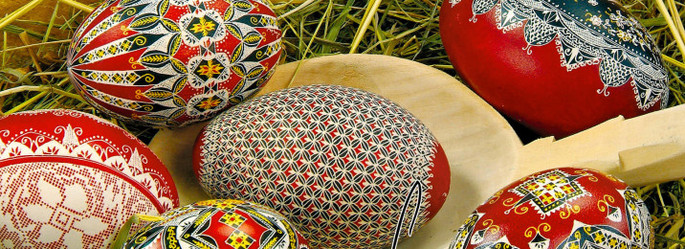Painting eggs for Easter is a tradition in Romania, that goes back for centuries. Painted eggs are a unique element in Romanian culture, which stands testament to the piety and spirituality of the Romanian people.
The red egg is a symbol of the renewal of nature and of the seed of life, but the painted Easter egg also bears motifs that engender joy and awe. Religious motifs can be represented, or objects from day-to-day life.
The eggs are canvases on which people portray elements from their daily lives and from their most treasured beliefs. They are not meant as objects of beauty only, but also as sacred objects.
The motifs are numerous and varied. At times, they come in the shape of heavenly bodies, like the Sun or the Moon, at other times they can take the shape of a natural element, like plants or animals, religious symbols, like the cross, or different utensils. They differ according to the area of the country where they are made. For instance, the most renowned place where they do Easter egg painting and where they have transformed this custom into an art is Bucovina. The folk motifs they use here are the wheat ear, the Sun, the leaf or the cross. In Muntenia and Oltenia, they use more naturalistic motifs and the colors are more subdued. In Transylvania and Banat, there is a variety of patterns and colors.
Some of the symbols represented on eggs mean the following: the straight vertical line represents life, the straight horizontal line represents death, the double straight line – eternity, the line with rectangles – thought and knowledge, the undulated line – water, purification, the spiral – time, eternity and the double spiral – the link between life and death.
The eggs are traditionally painted on the Thursday and Saturday before Easter, by women. They are not meant to be eaten, like the other colored eggs, because they are drained of their content before being painted.
Sources:
http://www.crestinortodox.ro/datini-obiceiuri-superstitii/ouale-incondeiate-romani-68758.html























